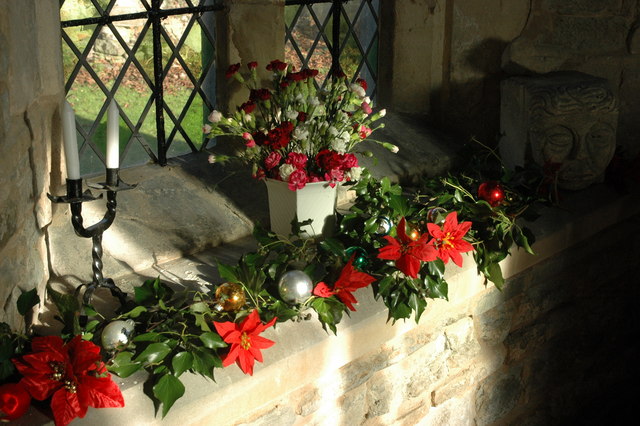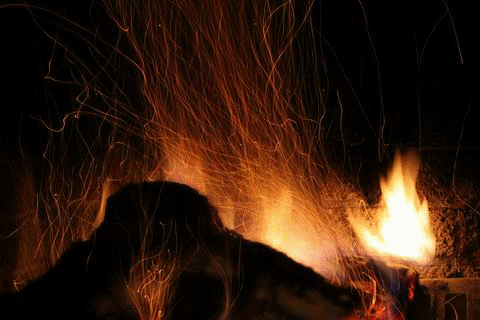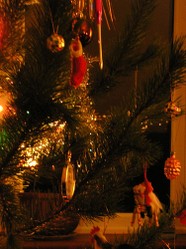 January 5th is Twelfth Night. The rush to get the decorations down on the 6th represents an acknowledgement that Christmas is now officially over.
January 5th is Twelfth Night. The rush to get the decorations down on the 6th represents an acknowledgement that Christmas is now officially over.
Some confusion might arise from the fact that, outside the Epiphany of the (western) Christian calendar, there is nothing special about the twelve days of Christmas anymore.
Presents are given on Christmas Day; the New Year is celebrated on the night of December 31st, then it's just a slow slide back into work and the everyday routine of the rest of the year. But as with anything which makes no sense in modern society, there are more ancient traditions at work here.
In the west, the Christmas period used to be celebrated as the whole twelve days. Presents weren't just handed over on the 25th, but on each day from then until January 5th. The rich kept open houses, in which the local poor could collect alms each morning until Twelfth Night. Royalty bestowed titles; theaters laid on special plays (including a very famous one by Shakespeare actually called Twelfth Night); and people visited each other for the entire period.
However, Christmas also has a long history of political and religious tension. This is particularly true of Britain, where Catholicism and Protestantism have violently clashed, then both come under siege from the twin forces of commercialization and Atheism. The whole sorry saga has been brilliantly chronicled by Professor Ronald Hutton, in his seminal study entitled Stations of the Sun: A History of the Ritual Year in Britain.
The important point to make here is that there was a concerted effort by various religious factions to reduce the festive period. The ultimate aim was to abolish it in its current form completely. The birth and epiphany of Christ had to be marked, but not with patently Pagan celebrations. They were only partially successful. The reduction took place, but the festivities went on.
Glimpses of this historical extended Christmas do still remain. Each year, carol singers perform the song 'The 12 Days of Christmas', which blatantly talks about someone receiving presents for the entire period.
Then, of course, there is the rush to remove the decorations on Twelfth Night. In some ways, this could be viewed as an unconscious rebellion against taking them down on December 26th. Though that was never openly suggested, it must have seemed an inevitable next step at times.


 Last year the date was just not convenient.
Last year the date was just not convenient.
 The issue here is two-fold. The first is an instinct of protection for home and family.
The issue here is two-fold. The first is an instinct of protection for home and family.


 January 5th is Twelfth Night. The rush to get the decorations down on the 6th represents an acknowledgement that Christmas is now officially over.
January 5th is Twelfth Night. The rush to get the decorations down on the 6th represents an acknowledgement that Christmas is now officially over.


 Those campaigning Christians, in the 17th and 18th centuries, were right to point the finger at the Paganism inherent in the Christmas celebrations.
Those campaigning Christians, in the 17th and 18th centuries, were right to point the finger at the Paganism inherent in the Christmas celebrations.


 St Tydecho's Churches in West Waleson 09/03/2014
St Tydecho's Churches in West Waleson 09/03/2014
 Goodies for an Outlander Premiere Partyon 03/06/2015
Goodies for an Outlander Premiere Partyon 03/06/2015
 Holocaust Memorial Day Interview with Rainer Höss, Grandson of Rudolf Architect of Auschwitzon 01/24/2015
Holocaust Memorial Day Interview with Rainer Höss, Grandson of Rudolf Architect of Auschwitzon 01/24/2015
 Romantic Valentine Gifts for an Outlander Fanon 01/16/2015
Romantic Valentine Gifts for an Outlander Fanon 01/16/2015



Comments
*bows* Glad to be of service.
If I hadn't already, you could have just requested it. I have no problem knocking up history pages, if it's something that I can adequately research (or better yet, already know about).
As I was just writing for my 12 days of Christmas ornaments page, I was wondering if Jo had any history written about it. Perfect!
Thank you for that extra information. Is that the nature of the Epiphany?